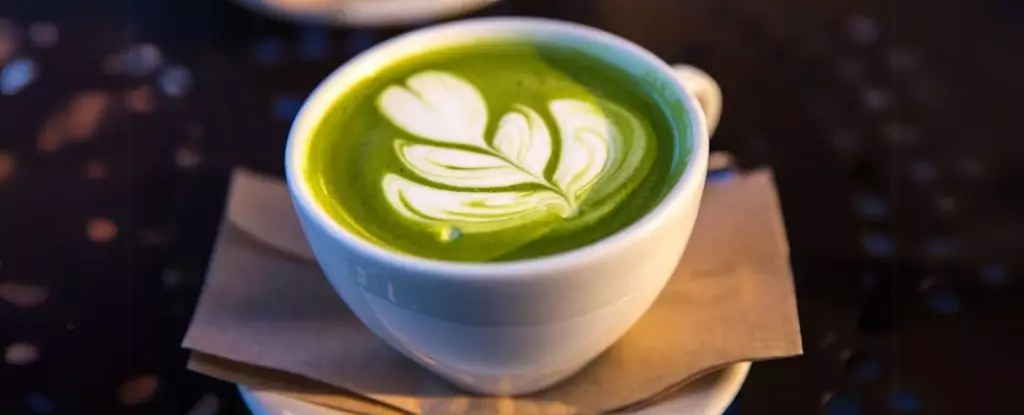In the world of health foods, few items stand out as brilliantly as matcha. Often recognized for its stunning green color and deeply rooted cultural significance, this powdered tea has garnered a reputation that elevates it above ordinary green tea and even morning coffee. The essence of matcha begins with its unique cultivation method. Unlike its black tea counterpart, which undergoes fermentation, or standard green tea that is simply dried, matcha is grown under shaded conditions for several weeks. This deliberate approach alters the plant’s composition, enriching its chlorophyll content and packing a potent punch of amino acids. The result is not just a striking color, but a flavor profile that is both complex and invigorating, making it a truly remarkable beverage.
What sets matcha apart in the realm of tea is not just the growing conditions but also how the leaves are processed. After being carefully selected and dried, they are ground into a fine powder. This meticulous preparation translates to higher nutritional value, as the entire leaf is consumed, maximizing the benefits typically associated with green tea.
Historical Context: A Journey Through Time
While matcha is often steeped in the serene rituals of Japanese tea ceremonies, it originally hails from China. Brought to Japan in the 12th century by Buddhist monks seeking a meditative aid, it quickly evolved into an integral part of Japanese culture. The tea became synonymous with Zen practices, embodying a focus on mindfulness and tranquility. Over centuries, its presence solidified in both casual and formal gatherings, culminating in a celebration of aesthetics, taste, and philosophy that goes beyond mere beverage consumption.
This rich history adds layers to matcha’s allure, inviting enthusiasts not just to enjoy its flavor but to immerse themselves in the traditions it represents. Through a simple cup of matcha, one can sip upon centuries of cultural significance and spiritual practice.
Nutritional Benefits: The Reacting Power of Antioxidants
Matcha’s standing as a superfood derives significantly from its potent nutrient profile. Similar to green tea, it boasts a high concentration of polyphenols, particularly flavonoids known for their antioxidant properties. These compounds are celebrated not just for their role in combating oxidation but also for their potential anti-inflammatory and antimicrobial effects—benefits indicative of a healthful lifestyle.
Crucially, because matcha is consumed in its entirety rather than steeped and discarded, the health benefits are amplified. While many claims surrounding matcha—such as its ability to reduce cancer risk or support heart health—are promising, they often lean heavily on preliminary lab or animal studies rather than extensive human research. It’s critical for consumers to embrace these claims with caution, aware of the gap between early findings and conclusive evidence.
Caffeine Concerns: A Delicate Balance
Among the myriad of factors that distinguish matcha, its caffeine content is particularly notable. While it contains more caffeine than standard green tea, it generally falls short of what a typical cup of coffee delivers. This moderation is a double-edged sword. On one hand, caffeine can sharpen focus and enhance mood, yet it also has the potential to induce anxiety and insomnia when consumed excessively.
For individuals who are sensitive to caffeine’s effects, matcha offers a gentle alternative. The presence of L-theanine, an amino acid unique to tea, provides a calming counterpart to caffeine’s stimulating effects. This dynamic makes matcha a fantastic choice for those who enjoy the benefits of caffeine without the associated jitters.
The Great Debate: Matcha vs. Coffee
When pitting matcha against coffee, personal preferences play an enormous role in determining the ideal beverage. Both drinks yield significant health benefits, including improved metabolism and antioxidant support. Coffee’s extensive research backing makes it a reliable choice for many, often landing within the safe consumption limits of three to four cups a day. In contrast, matcha typically garners recommendations of one to three cups daily, which corresponds with its unique properties.
It’s important to consider how both beverages affect digestion, especially in people prone to issues like bloating or reflux. While both contain acids that may disturb sensitive stomachs, matcha’s smoother profile, thanks to L-theanine, positions it as a gentler option.
Ultimately, the decision boils down to individual health goals and preferences. Whether one is leaning towards the robust familiarity of coffee or the serene tranquility of matcha, both paths lead to valuable health benefits. The journey of choosing begins with self-awareness and a desire for a mindful approach in nurturing both body and mind.

